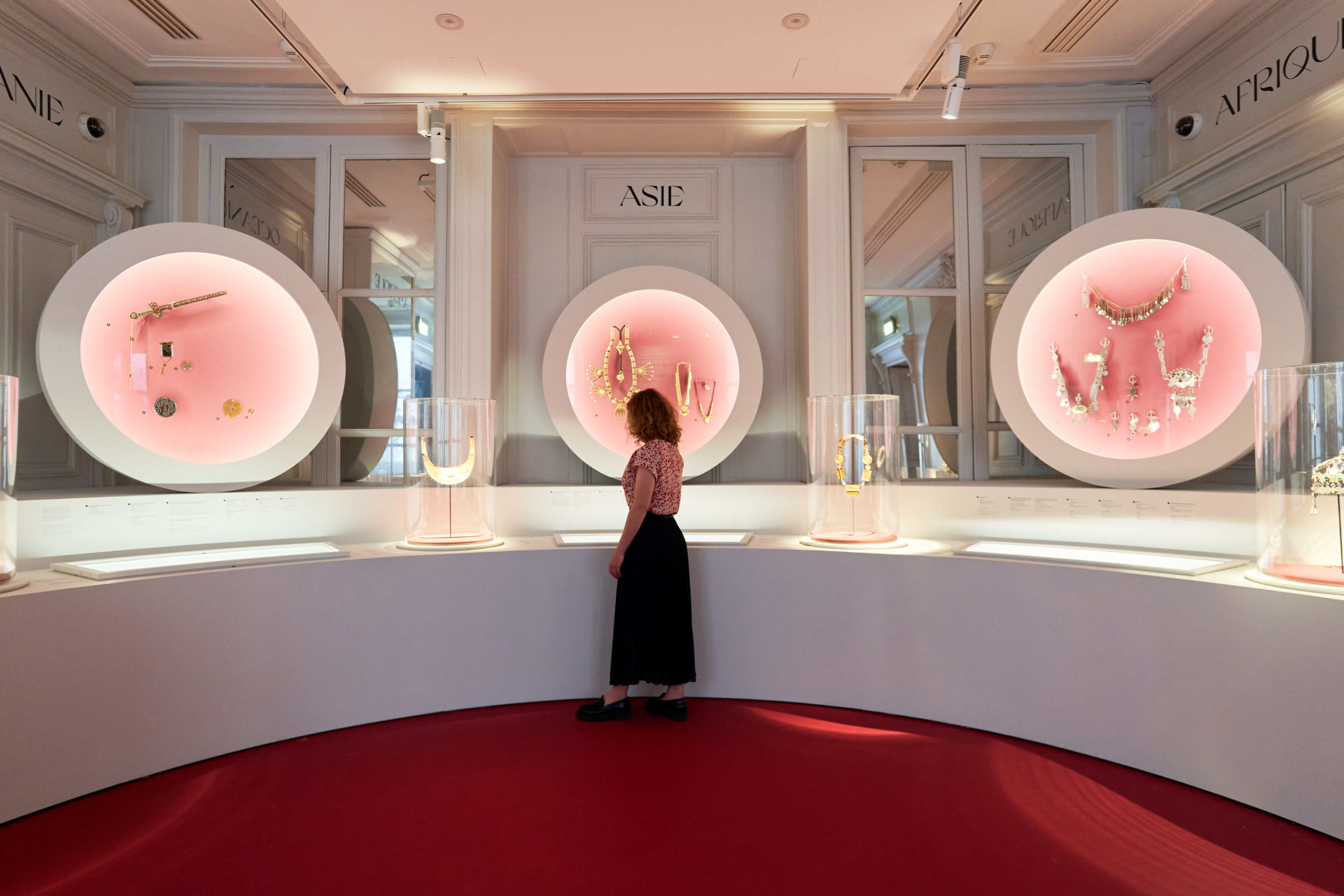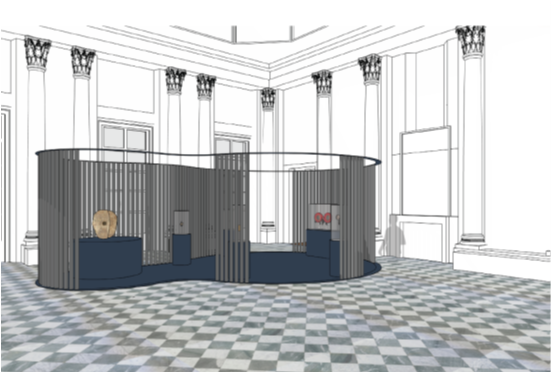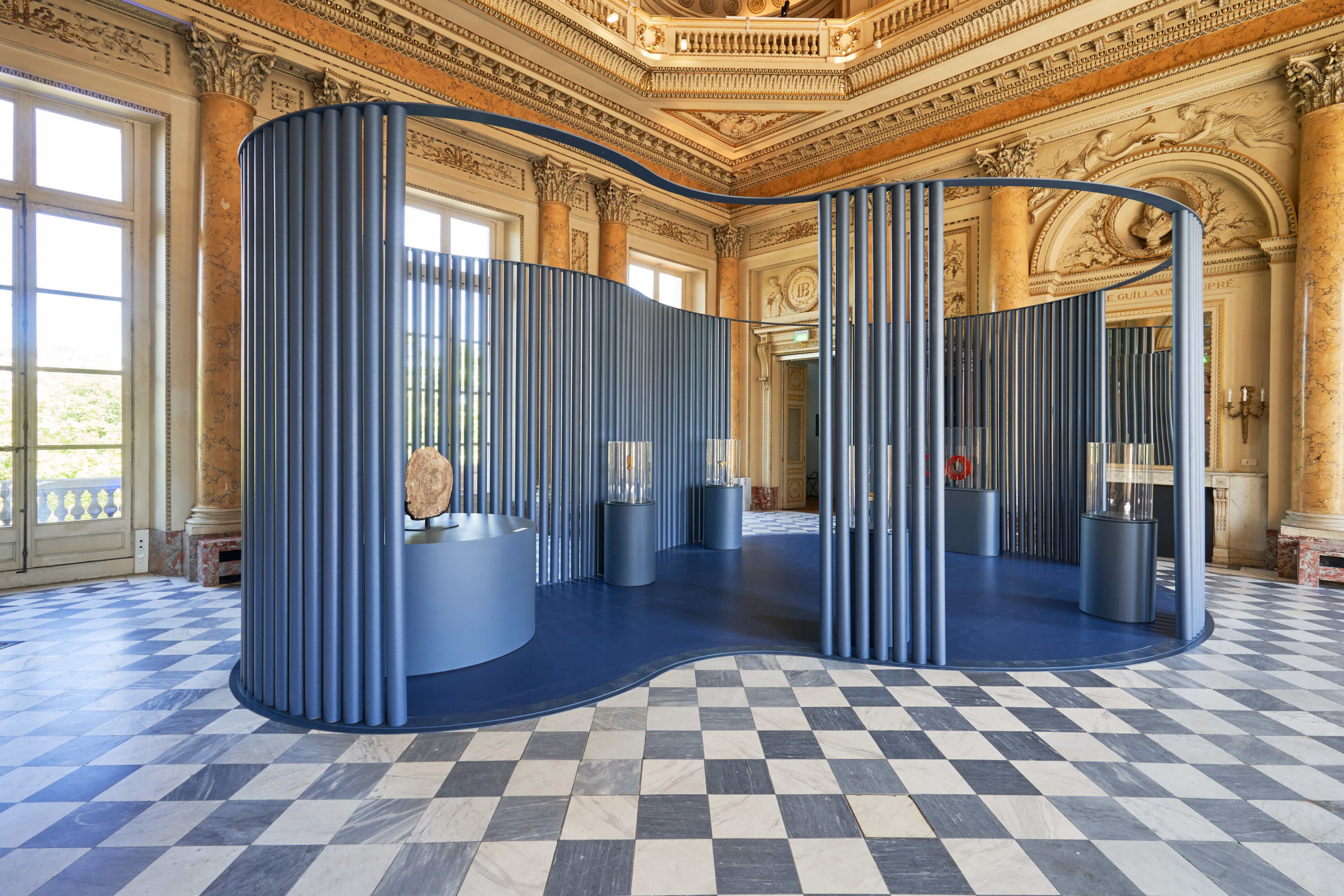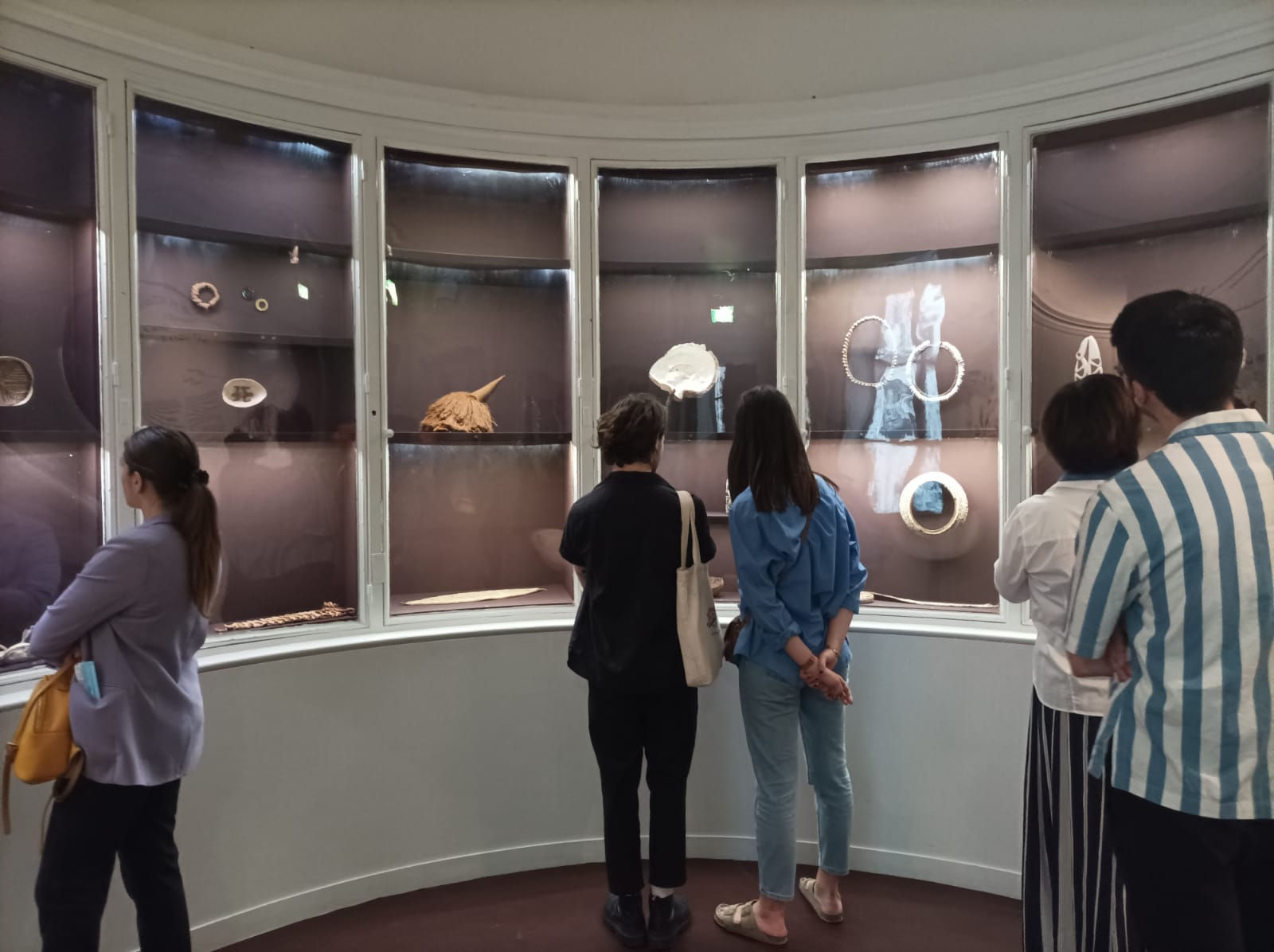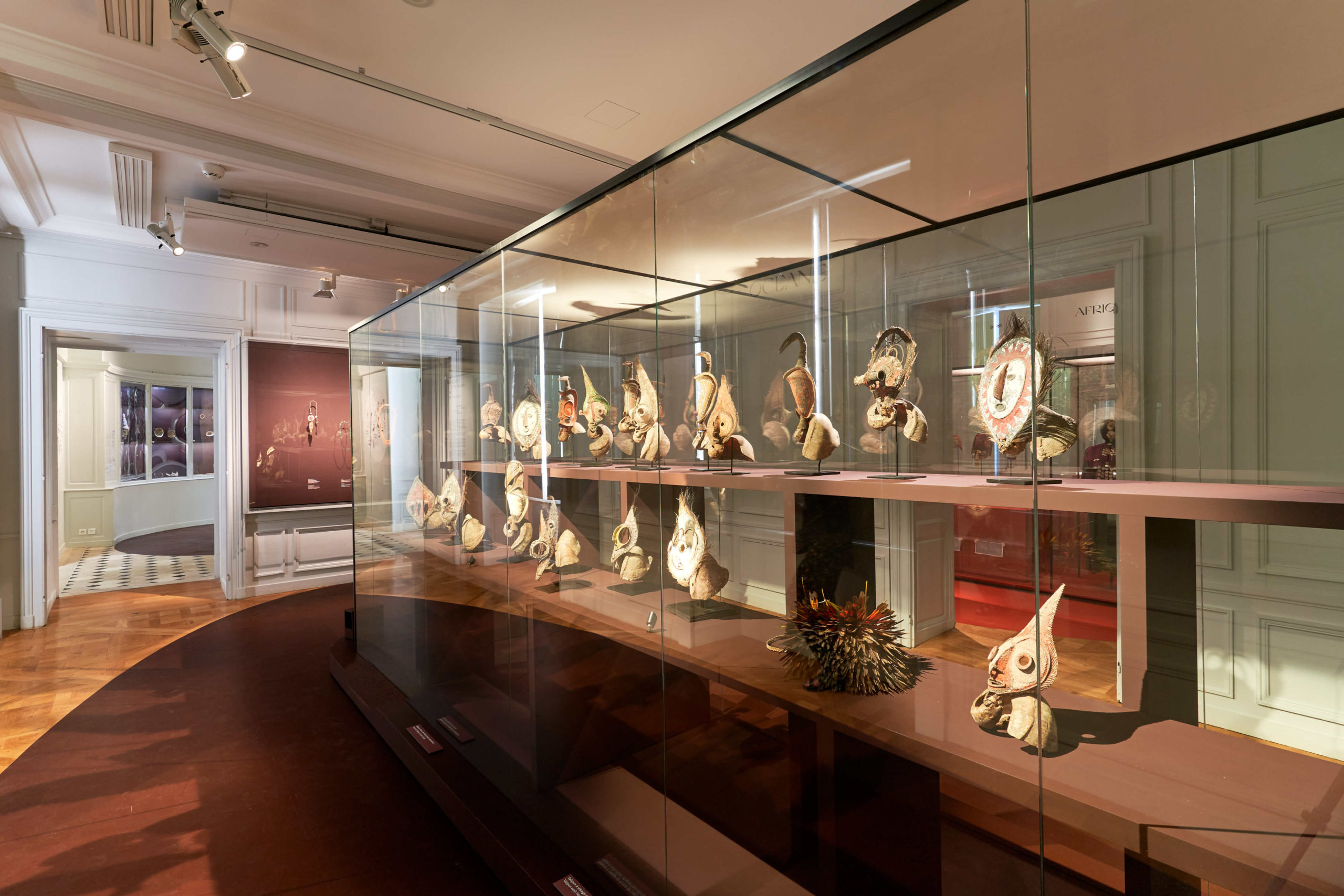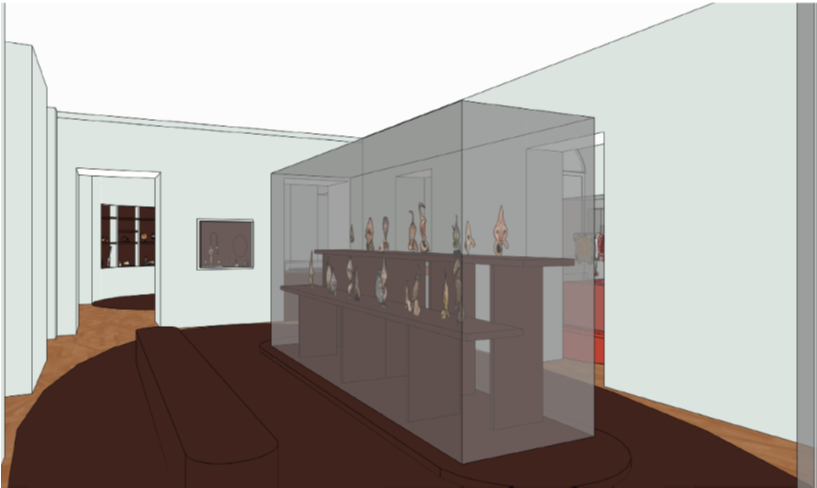Monnaies & Merveilles – Exhibition design adapted to the history of a venue
France Muséums has worked closely with the Monnaie de Paris on the design for its new temporary exhibition Monnaies & Merveilles. Presented to the public from 12 May to 25 September 2022, this exhibition is a poetic and sensory journey through the countless uses of money in different civilisations over the course of history.
As an International Museum Consultancy, France Muséums worked on all aspects of the exhibition Monnaies & Merveilles presented at the Monnaie de Paris including design, production, scientific development, loan management, exhibit management, overall coordination and mediation, as well as assisting with the exhibition layout and interior design. Curated by Bérénice Geoffroy Schneiter, an art historian who specialises in non-western jewellery and body ornament, the exhibition features over 210 unique exhibits and covers a floor area of approximately 675 square metres.
The show was designed to occupy all the historic salons on the first floor of the Hôtel de la Monnaie (the historic Paris Mint). France Muséums was in charge of providing the curator and teams of the Monnaie de Paris with guidance as they put the new exhibition in place by creating a compelling narrative in which the key element is dialogue between exhibits and visitors. On the project team specially put together for the exhibition were Alice Rivollier (project manager and deputy director of exhibitions and publishing), Marine Pichard (exhibition production manager), Marie Knidler (artwork coordinator), Mathilde Etot (head of mediation and educational programming), Clémence Derrien (project manager) and Sabrina Mathieu, (project manager).
STORYTELLING IN THE CONTEXT OF A HISTORIC BUILDING
The Monnaie de Paris was the first major building constructed in the reign of Louis XV, and its walls are steeped in history. It was designed by Jacques-Denis Antoine in Neo-Classical style. Although it takes the form of a palace arranged around a series of courtyards, it retains the functionality of a modern factory and still functions as one today. It was the first factory ever built in the city of Paris, and is now the only one that remains in activity.
The interior of the palace is richly decorated in neo-classical style and features many ornamental sculptures. It was renovated in 2017 with the aim of protecting its history and unique features.
When designing such an exhibition as this, it is vital to take account of the DNA of the venue in order to construct a coherent narrative. Although the exhibition design team might see the historic building as a constraint, it can also provide opportunities for new ideas and innovative visitor experiences to emerge.
Aware of the need for a project that physically integrates the building into the exhibition design, France Muséums helped the curator and the Monnaie de Paris to carry out preparatory studies and outline a brief so that a consultation could be organised to select a team with an innovative project proposal.
Designed by Pascal Rodriguez, the exhibition layout highlights the symbolism of coins from other civilisations. The architecture and the exhibition design interact with one another in an exhibition that conveys the desired message while remaining in harmony with the venue. The classical style and opulence of the historic salons of the Hôtel de la Monnaie prompted the France Muséums design team to opt for a sleek contemporary look that contrasts with the surroundings and highlights the artworks and objects on display while allowing the building’s specific energy to express itself. Pascal Rodriguez also decided to use the existing architecture to support his design, playing with specific features such as ornate mouldings, setting a two-way showcase in a wall and creating a table display surrounding a fireplace.
The main challenge of the exhibition was to show the exhibits off to their best advantage while adopting a thoughtful approach to a historic building with salons of sometimes gigantic proportions in order to create a magnificent showcase in which artworks, mediators and visitors can meet and interact. France Muséums was involved throughout the design process until the final fit-out of the exhibition spaces.
TURNING THE CONSTRAINTS OF A VENUE INTO DESIGN OPPORTUNITIES
The Hôtel de la Monnaie and its salons have specific characteristics that needed to be taken into account in the exhibition storytelling and design. The exhibition is divided into five parts occupying the large Salon Dupré as well as several smaller rooms. In order to provide a fluid visitor experience and to highlight the main themes of the exhibition, each section has its own graphic design and colour scheme.
THE SALON DUPRÉ: ENTERING THE EXHIBITION
The Salon d’Honneur Guillaume Dupré is a huge colonnaded room (188 sq.m.) that is often hired for private functions or used for cultural events. The main challenge was to play with the architecture of the room so that several small exhibits could be displayed to form an introduction to the exhibition, with the display occupying a smaller area so that the room can still also be used for other events. The design team supported by France Muséums opted for an impactful solution in the form of a droplet-shaped display area for 6 major exhibits: a marangga pectoral (Western Sumba, Indonesia), a ngindza currency object in the shape of a throwing knife (Yakoma People, Central African Republic), an example of tevau ceremonial wedding currency (Santa Cruz Island, Solomon Islands, Melanesia), a rai currency stone (Yap Island, Micronesia), an oban coin (Japan) and a Bulgari necklace.
The aim here is to create a wow factor at the entrance to the exhibition by presenting key exhibits representing the diverse regions, forms and materials to be found in the subsequent rooms. Creating a special display area structures the presentation of the exhibits and prevents them from being overwhelmed by the size of the room. It forms an “exhibition inside the exhibition” and makes it possible to use the space for cultural events or private functions.
THE CABINET OF CURIOSITIES: MAKING BEST USE OF WHAT IS ALREADY THERE
The artworks and objects exhibited in Monnaies & Merveilles are mostly made of organic materials that require optimum light, temperature and humidity. When this is the case, it is often easier to use state-of-the-art display solutions rather than existing furniture. The project teams nonetheless decided to use one of the original features of the venue. The project designed by the curator and her teams involved creating a “cabinet of curiosities” to display several objects from Oceania made of beads, feathers and shells. One of the salons already contained a large curved showcase, and instead of hiding it, France Muséums, the Monnaie de Paris and the design teams decided to turn it into an intriguing Wunderkammer.
When designing an exhibition, the main priority is to display exhibits so that they form a coherent narrative for the visitor. The exhibition design, the storytelling and the scientific content are thus closely intertwined. An exhibition held in a building that has strong DNA has to play with its identity to create a symbiotic relationship between the venue and the exhibition, and a successful exhibition layout can transcend a space and provide it with new functions.
France Muséums strives to support project leaders throughout the preparatory phases required when developing an exhibition and designing a coherent layout in keeping with the curatorial approach. Our teams are present at every stage of the project, guiding and supporting our partners until the exhibition opens to the public.

